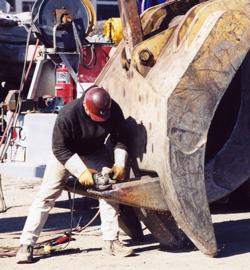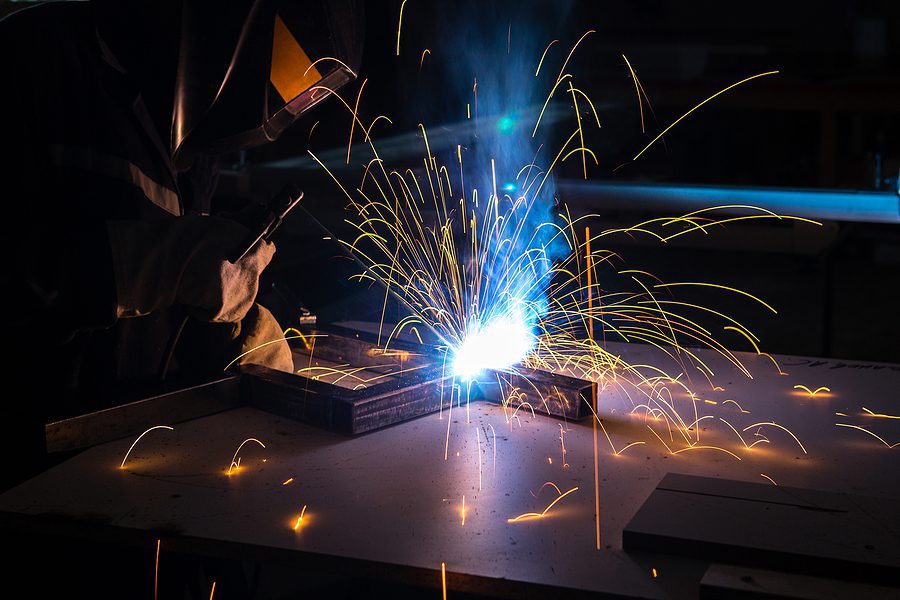Typical Welding Fixing Issues and How to Address Them Efficiently
Welding repair work typically run into a series of issues that can threaten the integrity of the end product. Usual troubles include insufficient infiltration, porosity, and imbalance, to name a few. Each flaw provides one-of-a-kind difficulties that call for details approaches for resolution. Recognizing these problems is necessary for welders aiming to enhance their outcomes and abilities. This conversation will certainly explore these typical welding repair service issues and reliable approaches to address them.
Inadequate Penetration
Poor infiltration occurs when the weld steel falls short to fully fuse with the base product, leading to weak joints and potential structural failings. This concern commonly comes from inadequate warmth input, inaccurate electrode angle, or improper welding rate. Welders may come across poor penetration due to a mistake of the required parameters for a details product density or kind. In addition, contamination on the base material's surface can prevent efficient bonding, worsening the trouble. To address insufficient penetration, welders must assure appropriate setups on their devices and maintain a tidy job surface. Regular inspection of welds is advised to determine any type of deficiencies early, enabling prompt adjustments and the avoidance of compromised structural integrity in bonded settings up.
Porosity
Porosity is an usual problem in welded joints that materializes as little gas bubbles caught within the weld steel. This problem can compromise the integrity of the weld, leading to minimized stamina and potential failing under tension. Fabrication. Porosity typically arises from contamination, wetness, or improper welding strategies, which permit gases to leave right into the liquified weld swimming pool. To attend to porosity, welders ought to assure correct surface area preparation, keep a tidy working setting, and make use of appropriate welding criteria. Additionally, selecting the right filler product and protecting gas can alleviate gas entrapment. Regular evaluation and screening of welds can aid recognize porosity early, guaranteeing timely restorative actions are taken, thereby preserving the quality and integrity of the welded framework
Imbalance
Misalignment in welding can emerge from numerous variables, including improper arrangement and thermal development. Recognizing the root creates is necessary for reliable resolution. Several modification techniques are readily available to straighten elements and assure architectural stability.
Reasons for Imbalance
Welding imbalance commonly comes from a selection of underlying issues that can compromise architectural stability. One main cause is inappropriate fit-up of components before welding, which can cause gaps and uneven surface areas. Variants in thermal growth throughout the welding procedure can also lead to distortion, particularly if the products being joined have various coefficients of expansion. Furthermore, poor clamping and fixturing might fall short to hold parts securely in position, bring about movement throughout welding. Inadequately maintained devices, including welding machines and devices, may present variances in the weld bead, additional adding to imbalance. Operator mistake, stemming from inadequate training or experience, can additionally play a substantial role in developing misaligned welds.

Improvement Strategies Readily Available
Dealing with misalignment effectively calls for a combination of corrective methods tailored to the details problems handy. One usual approach is making use of components or jigs to hold components in the correct placement during welding, making sure constant positioning. In addition, pre-heating the products can help decrease distortion and improve fit-up. For substantial misalignment, mechanical adjustment methods, such as making use of hydraulic jacks or clamps, can be used to correct the position before welding. Post-weld heat therapy may also be required to ease stresses brought on by imbalance. Ultimately, mindful examination and change during the setup stage can stop misalignment problems from ending up being considerable troubles, advertising a smoother welding process and boosting total structural stability.
Distortion
Distortion is a typical obstacle in welding that can occur from different aspects, consisting of irregular cooling and heating. Comprehending the root causes of distortion is vital for executing effective prevention methods. Addressing this problem not just boosts structural integrity but additionally boosts the general top quality of the weld.
Reasons of Distortion
When based on the intense warmth of welding, materials frequently undertake changes that can bring about distortion. This phenomenon primarily emerges from thermal growth and tightening throughout the welding procedure. As the weld area warms up, the material expands; upon air conditioning, it gets, which can develop interior stress and anxieties. In enhancement, irregular home heating throughout a workpiece can aggravate these tensions, leading to warping or bending. The sort of material additionally plays a considerable duty; metals with varying thermal conductivity and coefficients of growth may respond in different ways, causing unforeseeable distortions. Inadequate joint design and insufficient fixturing can add to imbalance during welding, enhancing the probability of distortion. Understanding these causes is necessary for efficient welding repair service and prevention methods.
Avoidance Techniques
Effective avoidance techniques for distortion throughout welding concentrate on managing warmth input and making certain proper joint design. Preserving a constant warmth input helps to lessen thermal growth and tightening, which can bring about distortion. Using strategies such as preheating the workpiece can likewise decrease the temperature level slope, advertising uniform heating. Additionally, selecting appropriate joint designs, such as T-joints or lap joints, can improve security and reduce anxiety concentrations. Applying proper fixturing to secure the work surfaces in position even more aids in keeping alignment throughout the welding procedure. Staggered welding series can disperse heat a lot more uniformly, preventing localized distortion. By applying these techniques, welders can greatly reduce the likelihood of distortion and boost the general quality of their welds.
Fracturing
Fracturing is a typical concern run into in welding repair work, usually resulting from various aspects such as inappropriate air conditioning rates, material selection, or insufficient joint preparation. The occurrence of fractures can considerably endanger the integrity of the weld, bring about prospective failings throughout procedure. To address this concern, welders must first evaluate the source, making certain that products work and like it properly chosen for the specific application. In addition, controlling the air conditioning rate throughout the welding procedure is crucial; fast cooling can induce anxiety and cause fracturing. Correct joint style and preparation additionally add to lessening the danger. Executing these approaches can improve weld quality and resilience, inevitably decreasing the probability of fracturing in completed weldments.

Incomplete Blend
A significant concern in welding fixings is insufficient fusion, which occurs when the weld metal does not effectively bond with the base material or previous weld passes - Montana Mobile Welding and Repair Belgrade Fabrication. This flaw can cause weak points in the joint, potentially endangering the honesty of the bonded structure. Variables adding to incomplete combination include not enough heat input, inappropriate welding method, and contamination of the surfaces being signed up with. To resolve this problem efficiently, welders ought to ensure appropriate pre-weld cleaning and surface preparation, along with adjust their welding criteria to achieve appropriate penetration and combination. Normal examination throughout the welding procedure can also aid recognize insufficient blend early, permitting prompt restorative procedures to boost the total high quality of the weld
Overheating
While welding repair services can enhance structural honesty, overheating presents a considerable challenge that can lead to product degradation. Excessive heat during welding can change the mechanical properties of steels, leading to minimized toughness, increased brittleness, and warping. This sensation is particularly essential in high-stress applications where structural dependability is critical. Identifying getting too hot can entail aesthetic assessments for staining or distortion, along with keeping an eye on temperature throughout the welding procedure. To reduce the risks linked with getting too hot, welders need to utilize suitable methods, such as regulating warm input, readjusting travel rate, and utilizing ideal filler materials. Additionally, carrying out pre- and post-weld heat therapies can help recover product homes and enhance the total quality of the fixing, making sure long-lasting performance and safety and security.
Often Asked Questions
What Are the Typical Signs of a Welding Flaw?

How Can I Evaluate My Welds for Top quality?
To examine welds for quality, one can use visual examinations, ultrasonic screening, and radiographic approaches. Each strategy ensures architectural stability, recognizes defects, and confirms adherence to defined requirements, eventually enhancing the dependability of the welded joints.
What Safety Precautions Should I Take While Welding?
When welding, one must focus on safety by putting on suitable individual safety devices, ensuring correct air flow, protecting flammable materials away, maintaining a clean office, and being mindful of surroundings to avoid injuries and mishaps.
Can I Fix a Weld Without Redoing the Entire Joint?
Fixing a weld without redesigning the entire joint is feasible, relying on the damage (Belgrade Welding). Techniques such as grinding, including filler material, or utilizing a welding procedure can successfully resolve specific imperfections while maintaining the surrounding structure
What Tools Are Vital for Effective Welding Services?
Necessary tools for efficient welding fixings consist of a welding maker, cord brush, grinder, safety equipment, clamps, and filler materials. Each device plays an important function go now in guaranteeing top quality and safety throughout the fixing process. Porosity generally occurs from contamination, wetness, or improper welding strategies, which enable gases to run away into the liquified weld pool. Inadequately kept equipment, including welding machines and tools, may present incongruities in the weld bead, additional adding to misalignment. When subjected to the intense warm of welding, materials usually undergo changes that can lead to distortion. Cracking is an usual problem run into in welding repairs, often resulting from different elements such as improper air conditioning rates, product option, or inadequate joint preparation. A substantial issue in welding repair work is insufficient blend, which takes place when the weld metal does not effectively bond with the base material or previous weld passes.